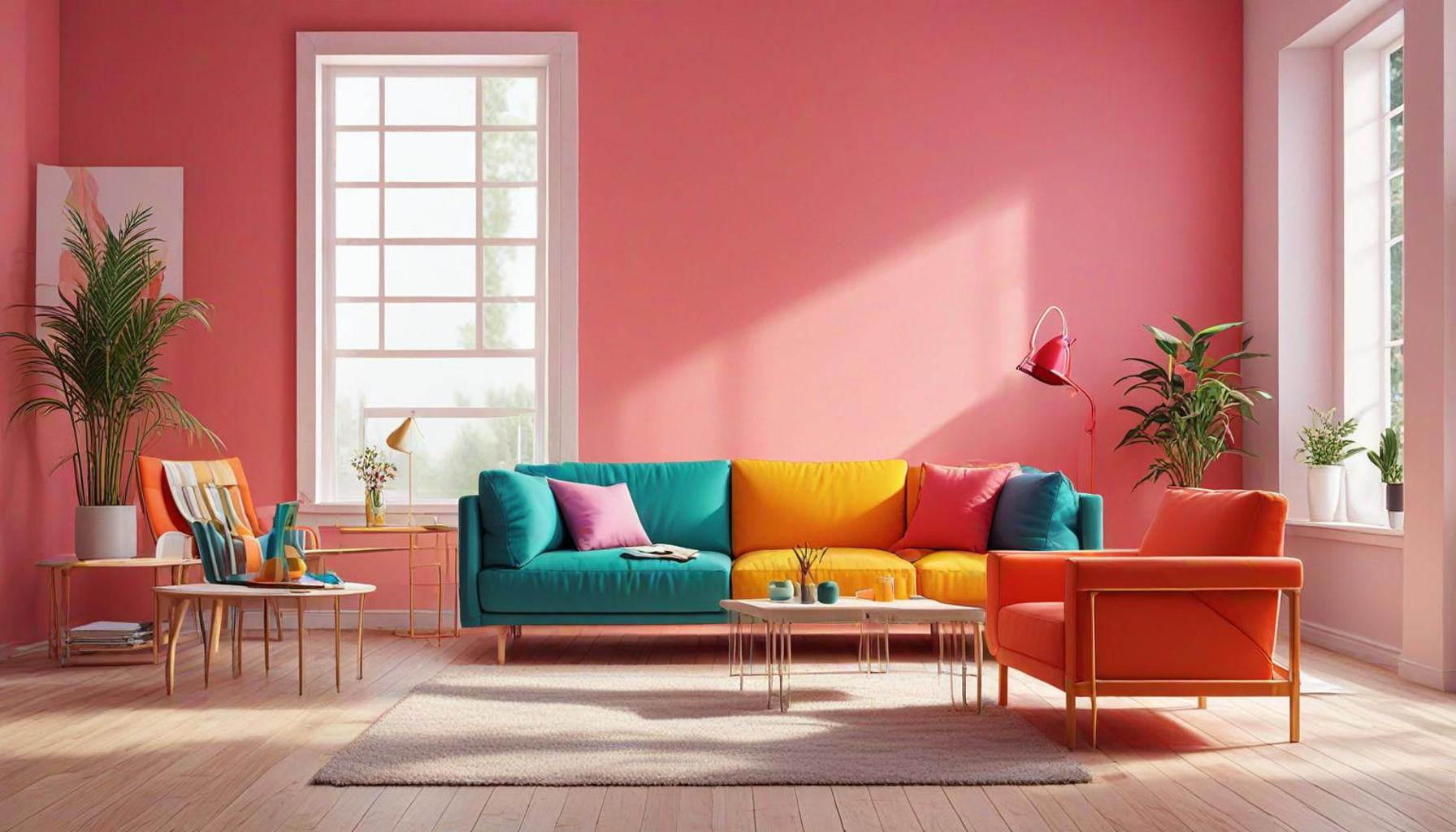How Minimalist Philosophy Can Influence the Choice of Multifunctional Furniture

Embracing Simplicity in Design
In today’s fast-paced world, the allure of minimalist philosophy resonates deeply with many individuals. It encourages us to seek clarity, focus, and purpose in our spaces. This approach goes beyond aesthetics; it shapes our choices, especially when it comes to selecting multifunctional furniture. As urban environments become denser and living spaces grow smaller, the demand for simplicity and practicality becomes even more pronounced.
The Essence of Minimalism
Minimalism strips away the excess, revealing the essence of what truly matters. By prioritizing quality over quantity, we open ourselves to:
- Functionality: Furniture pieces that serve multiple purposes engage users in a more practical lifestyle. For instance, a dining table that can double as a workspace enables seamless transitions between activities.
- Space efficiency: In cities where space is at a premium, maximizing smaller living areas is crucial. Consider wall-mounted shelves that not only display decor but also free up floor space.
- Timeless aesthetics: Design that withstands trends allows homeowners to invest in pieces that remain relevant over time. Classic designs in neutral colors, such as a Scandinavian-style sofa, blend effortlessly with various décors.
Multifunctional Furniture: A Modern Solution
As urban living becomes increasingly common, multifunctional furniture has emerged as a viable answer to the challenges of limited space. This innovative furniture is characterized by:
- Convertible designs: Sofas that transform into beds, such as the popular Murphy bed, allow one-room apartments to serve dual purposes without sacrificing comfort.
- Hidden storage: Items like ottomans and coffee tables with concealed compartments are ideal for stowing away remote controls or blankets, keeping surfaces tidy and organized.
- Adjustable features: Height-adjustable desks, which have gained popularity especially in remote work scenarios, facilitate a more ergonomic workspace that adapts to individual needs.
By embracing the principles of minimalism, consumers can make more informed choices that enhance both functionality and style. The journey towards a minimalist living space, enriched by multifunctional furniture, not only declutters our homes but also uplifts our lifestyles. With brands like IKEA promoting versatile design elements, and local artisans crafting custom solutions, the options available today are extensive and accessible. Ultimately, minimalism allows individuals to curate spaces that reflect their identities without the chaos of excess, enabling a focused and serene living environment.
DISCOVER MORE: Click here to learn about mastering your time
Shaping Spaces with Intent
The minimalist philosophy is not merely a trend but a profound exploration into living with intention and clarity. With its roots deeply embedded in reducing clutter, both physically and mentally, this philosophy can dramatically influence the selection of multifunctional furniture. Individuals embarking on a journey toward minimalism often find that every item in their sanctuary should serve a purpose—ideally, many purposes. This perspective invites a different approach to furniture selection, one grounded in the practicality and versatility that modern living demands.
The Intersection of Form and Function
At the heart of minimalist philosophy is the harmonious relationship between form and function. Multifunctional furniture exemplifies this principle, as pieces are designed with the dual aim of aesthetic appeal and utility. Such furniture not only maximizes usability but also enhances the overall design of a space. The combination of simplicity and practicality can lead to a few key realizations:
- A reduction of excess: By choosing furniture that serves multiple roles, one can diminish the number of items needed in a home. For example, a sleek sofa that converts into a bed eliminates the need for a separate guest bed, thereby streamlining both space and resources.
- Encouragement of versatility: Multifunctional pieces create opportunities for living spaces to adapt over time. A coffee table with adjustable height allows for both casual lounging and formal dining, supporting various activities and events.
- Integration of innovative design: Forward-thinking designers are embracing the minimalist ethos by creating furniture solutions that boast both visual sophistication and practicality. This is evident in modular shelving units that can be reconfigured to suit changing needs, reflecting a modern lifestyle.
By thoughtfully considering how each piece of furniture contributes to the overall functionality of a space, individuals can embrace a minimalist mindset that resonates deeply within residential settings. This awareness not only cultivates a serene environment but also fosters choices that reflect the values of simplicity and sustainability. As consumers increasingly seek to reduce their ecological footprint, choosing multifunctional furniture that aligns with minimalist principles becomes an even more appealing strategy.
For example, with an ever-growing emphasis on sustainability, many brands are focusing on environmentally conscious materials that complement minimalist designs. This not only calls consumers to make responsible choices but also makes it easier for them to find products that resonate with their minimalist aspirations.
In summary, the intersection of minimalist philosophy and multifunctional furniture creates a unique opportunity for enhancing living environments. By valuing quality over quantity, individuals can more effectively curate their spaces, ensuring they remain functional, inviting, and ultimately, a genuine reflection of their lives.
| Advantage | Impact |
|---|---|
| Space Optimization | Multifunctional furniture encourages efficient use of space, making small apartments feel larger. |
| Reduced Clutter | By incorporating minimalist designs, homeowners can eliminate unnecessary items, leading to a serene environment. |
| Sustainability | Choosing multifunctional pieces promotes a sustainable lifestyle by reducing the number of items needed. |
| Cost Efficiency | Investing in versatile furniture can save money in the long run by reducing the need for multiple pieces. |
Minimalist philosophy profoundly impacts the design and selection of multifunctional furniture. This approach transcends aesthetics; it emphasizes utility and simplicity in everyday living spaces. Imagine a sleeper sofa that transforms your guest room into an inviting lounge or a dining table that doubles as a workspace. The beauty lies not only in their design but also in their ability to streamline life. Moreover, as urban living spaces become increasingly limited, optimizing available areas is no longer a luxury but a necessity. Multifunctional furniture, embraced through minimalist principles, allows individuals to create a clean, spacious environment that elevates both functionality and tranquility. This paradigm shift nurtures an appreciation for quality over quantity, leading to thoughtful purchasing decisions. As more people become aware of environmental concerns, the choice to invest in multifunctional options aligns seamlessly with a sustainable lifestyle. Embracing such furniture is not just about creating stylish living; it’s about cultivating an ethos that prioritizes simplicity, efficiency, and the planet’s health. These considerations make the meld of minimalist philosophy and multifunctional furniture a captivating exploration worth diving deeper into.
DISCOVER MORE: Click here to learn about mindful consumption
Emphasizing Quality and Craftsmanship
In a world often driven by mass production and consumerism, the minimalist philosophy invites an introspective look at quality and craftsmanship. When selecting multifunctional furniture, individuals are encouraged to prioritize not only the functionality but also the materials and the craftsmanship involved in the design. This shift in focus creates an opportunity to invest in pieces that stand the test of time, both aesthetically and physically.
Exploring Sustainable Materials
As more consumers become aware of the environmental impact of their choices, sustainable materials have gained prominence within the realm of multifunctional furniture. Minimalist philosophy advocates for durability, leading to an increasing demand for furniture crafted from renewable resources. Examples include:
- Bamboo: Known for its strength and rapid regrowth, bamboo furniture can offer a stylish yet sustainable option for those seeking versatility in their decor. A bamboo dining table, for example, not only serves as a meal centerpiece but can also be a workstation or crafting table.
- Reclaimed Wood: This resource not only adds character through its unique patina but also contributes to reducing waste. Reclaimed wood can be transformed into multifunctional pieces, like a coffee table with hidden storage, serving both decorative and practical purposes.
- Eco-friendly Upholstery: Fabrics derived from organic materials, such as hemp or organic cotton, can enhance the appeal of multifunctional sofas or chairs. These choices not only satisfy the criteria for aesthetic and comfort but are also aligned with eco-conscious principles.
In focusing on sustainable materials, minimalists can significantly influence the design landscape, encouraging manufacturers to adopt more environmentally responsible practices. Additionally, this alignment with sustainability nurtures a deeper connection to the items within the home, fostering an appreciation for their origin and purpose.
The Role of Local Artisans and Designers
Minimalist philosophy also promotes a resurgence in supporting local artisans and designers who create multifunctional furniture. By choosing locally sourced items, consumers contribute to their communities while ensuring a unique and bespoke feel in their homes. Not only do these handcrafted pieces often employ high-quality materials, but they also reflect the craftsmanship and cultural heritage of the region.
For instance, seeking out local craftsmen who specialize in modular furniture can result in tailored solutions that reflect personal style and functional needs. Items such as a sofa with removable, interchangeable covers or a dining table with expandable leaves represent the fusion of design and functionality. They become conversation starters that celebrate artistry while remaining true to minimalist and multifunctional principles.
Encouraging Mindful Consumption
Finally, embracing a minimalist approach to multifunctional furniture promotes mindful consumption habits. It encourages consumers to ask essential questions: Does this item serve a purpose? Will it enhance my life? This thoughtfulness can lead to fewer purchases, ultimately resulting in a more curated and intentional living environment.
As people navigate the choices available in the market, the confluence of minimalist philosophy and multifunctional furniture heightens the importance of intention in design. By championing fewer, more meaningful items, individuals can cultivate spaces that truly reflect their values and lifestyle preferences, merging aesthetics with practical living solutions.
DON’T MISS: Click here to learn how to optimize your time
Conclusion: A New Approach to Living Spaces
In conclusion, the intersection of minimalist philosophy and multifunctional furniture offers a transformative approach to how we curate our living spaces. As we embrace the ideals of simplicity and intention, we find ourselves gravitating towards designs that not only serve multiple purposes but also emphasize quality, craftsmanship, and sustainability. This alignment encourages a more conscious consumer culture where the environmental impact of our choices is prioritized.
Choosing furniture made from sustainable materials, such as bamboo and reclaimed wood, illustrates a commitment to both style and ecological responsibility. Moreover, supporting local artisans not only enhances the uniqueness of our home décor but also fosters community ties and preserves cultural craftsmanship. By selecting bespoke pieces, we cater to our personal aesthetic while honoring the stories and skills behind their creation.
Additionally, the encouragement of mindful consumption leads to a more intentional way of living. Each piece we choose can become a reflection of our values and lifestyles, creating spaces that resonate with our aspirations and needs. Rather than filling our homes with excess, we learn to appreciate the beauty and utility of fewer, thoughtfully chosen items. This minimalist approach to multifunctional furniture ultimately allows us to create environments that are both enriching and practical.
As more consumers understand the significance of these principles, the furniture industry may continue to evolve, pushing for greater innovation in design while adhering to the core tenets of minimalism. By integrating these philosophies into our homes, we embark on a journey that not only enhances our living conditions but also promotes a sustainable and fulfilling lifestyle.


